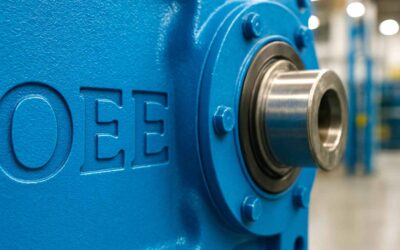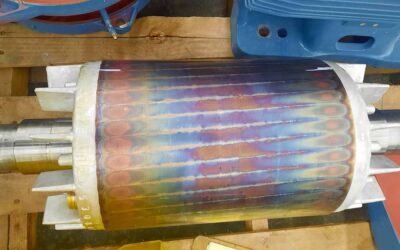If planning to outsource maintenance, consider very specific goals and outcomes. Here’s how to get it right.
When I speak at conferences about maintenance and reliability, and it comes time to answer questions from session attendees, someone inevitably asks my opinion on outsourcing maintenance. As a typical consultant, my response has always been the same: “That depends.” Before answering the question, I need to ask several questions first.
What is the motive to outsource? What are the current in-house skill sets? Are you looking for cost reduction, labor savings, or skills availability? The ability to contract out maintenance activities effectively and efficiently has always been a struggle for maintenance and engineering managers.
According to a recent survey of managers, cost savings are the number one reason for outsourcing maintenance. Let’s be crystal clear here: Outsourcing maintenance does not save money.
What managers are trying to achieve by contracting maintenance is a balance between costs and service that optimizes operations. If outsourcing maintenance is successful, managers will reduce maintenance expenses or avoid costs by employing someone with more expertise and skills.
Two Types of Maintenance
How can managers truly reap the return of the decision to outsource? The first step is to break down facility maintenance into two categories: commodity maintenance activities and skilled maintenance activities.
Commodity Maintenance Activities
As a homeowner, I have expectations related to the upkeep of my residence. I cut my lawn, do the gardening, trim the bushes, clear leaves, and keep the place looking acceptable. I ensure all the leaves are off the lawn when using my leaf blower. When the driveway requires snow removal, I ensure all the snow is off the driveway.
None of these tasks require a specific skill. If I need to, I can locate a service in the area to perform them. I can find a snow removal service and take my truck to a service station to have them change the oil.
My point is that managers can outsource tasks that don’t require specific skill sets or training to utilize in-house maintenance technicians more effectively.
Does it make sense to outsource these commodity services rather than use internal resources? Cost is a significant factor when sending out requests for proposals (RFP) because the consequences of performance can be pretty easy to rectify.
When crafting the service level agreement, managers should include an evaluation process using the best value proposition, which considers factors that include scope of work, qualifications, expertise, schedule, and a quantifying quality measure, such as references or visiting other facilities or operations with whom they currently contract. And, of course, their safety record!
Skills-based Maintenance Activities
When I refer to skilled maintenance, I’m looking at skilled labor and taking inventory of current multi-craft technical maintenance skills in mechanical systems, electrical distribution systems, hydraulics and pneumatics, welding, machining or fabrication, and carpentry.
The goal for managers who are considering outsourcing maintenance is to balance costs and service in a way that optimizes operations. When this process succeeds, managers can reduce maintenance expenses by employing a contractor with more expertise and skills than in-house resources can provide.
Technology Issues
In recent years, equipment and technology for institutional and commercial facilities have seen tremendous innovations. Consider the introduction of the Internet of Things (IoT), AI, drones, advanced condition monitoring, and remote monitoring. And don’t forget the advances in computerized maintenance management systems (CMMS).
Unfortunately, indications from organizations show that all this new technology is vastly underused in many cases. As a result, the performance of front-line maintenance and engineering technicians suffers because of their inability or knowledge to use the technology effectively.
Since technicians are responsible for this new and complex technology, it’s no wonder that many organizations are looking to outsource.
In this case, I would not look solely at costs. I also would consider several other qualifying criteria. In an article I wrote in June 2020, I mentioned that managers should study external factors when considering outsourcing.
These factors include the scope of service required, the contractor’s experience, and key performance indicators (KPI). By understanding the skilled maintenance activities involved in the scope of work, managers can identify potential contractors and their relevant experience, and of course, they can measure contractor performance against agreed-upon indicators.
A contract service provider can offer skilled services that managers might not be able to provide using in-house technicians. Many contractors offer a full range of maintenance and engineering services and can wrap several possibilities together under one contract.
These bundled services can make managing the process simpler and more convenient, rather than forcing managers to oversee a full staff and deal with human resources responsibilities. Basing the decision to outsource skilled maintenance activities on the lowest cost will cost you.
KPI Considerations
One absolute for successful maintenance and engineering outsourcing is establishing a baseline of true maintenance costs. You will only be successful if you understand your true costs. If you don’t have accurate and validated costs, you will compare apples to cumquats.
Remember KPIs, whether internal or outsourced. Measuring performance against KPIs is a key part of any outsourcing strategy. We’ve all heard the saying, “What gets measured, gets done.”
Regarding maintenance and engineering management, managers can use numerous KPIs to measure performance or service. They include the cost of maintenance by either internal or subcontractors to asset performance, asset reliability, quality, response time, service levels, complaints, etc. Whether it’s skilled or commodity outsourcing, having the proper measures to manage the service providers is crucial.
Finally, here is an actual story about an in-house grounds crew that demonstrates the complexity — and sometimes the absurdity — of outsourcing decisions. Several years ago, I arrived at a facility and noticed that about a dozen men were outside using gasoline trimmers to cut the lawn.
I assumed they were using trimmers because the normally used mowing equipment was out of service or for some reason. But there they were, using trimmers to maintain the facility’s lawn. When I asked why they were doing this, the answer stunned me.
The previous year, a person using the riding mower tipped over and was injured. The response to the accident from the organization’s insurance company was that the insurance premiums would increase significantly if they continued to use the riding mower. As a result, corporate made the decision to outsource the service and mandated the crew use trimmers.
Of course, this is an extreme, but the point is, let’s use common sense when looking to outsource. Don’t be fooled by the thought that outsourcing will save the organization money. Do your due diligence and understand why you’re considering the option and the benefits to the organization.
Andrew Gager, CEO of AMG International Consulting, Inc., is an industry-leading expert in manufacturing best practices, maintenance systems, and supply chain optimization, with over 20 years of Operations Leadership experience spanning from shop floor operations to plant management. The last 20+ years working with M&R organizations across industries such as manufacturing, oil & gas, food & beverage, pharma, and transportation, specializing in OpEx, reliability-based solutions and materials management. A Certified Maintenance Reliability Professional (CMRP), Certified in Planning & Inventory Management (CPIM) and Six Sigma Green Belt (CSSGB), Andrew is a sought-after speaker and trainer, known for his dynamic presentation style. He is regularly published in multiple trade periodicals. He holds a BS in Business & Operations Management from Rochester Institute of Technology.











